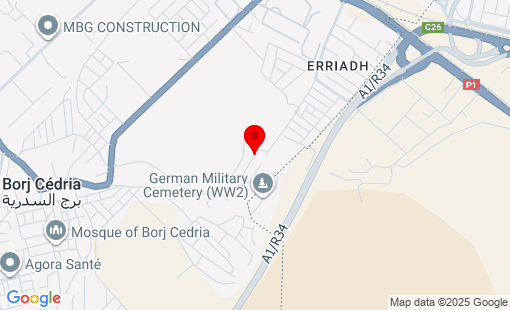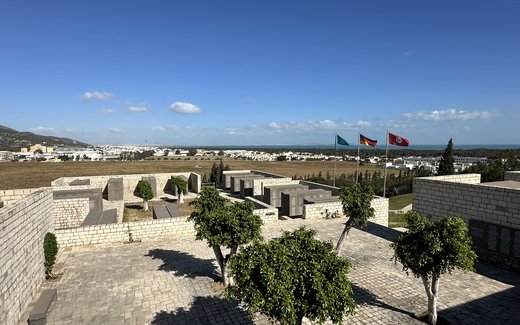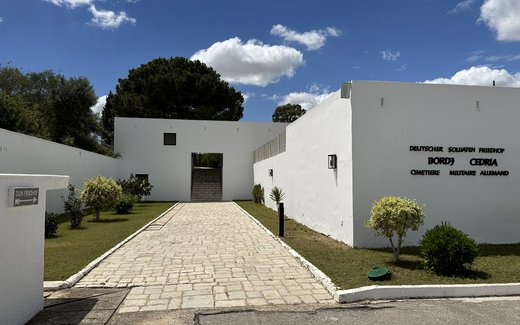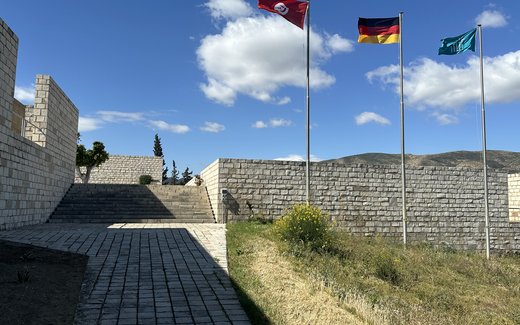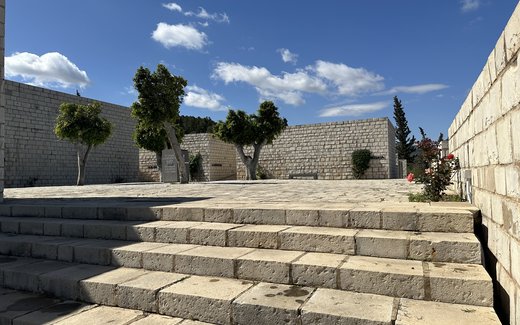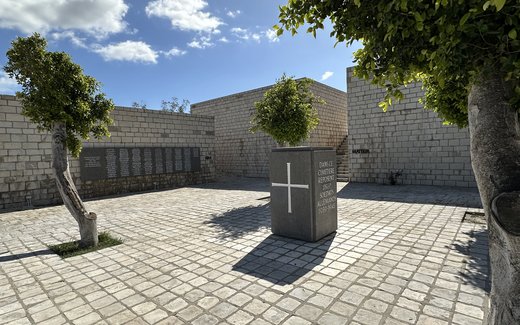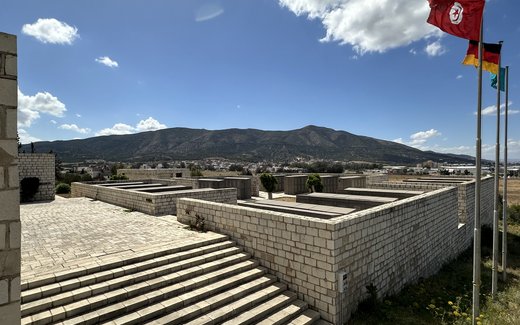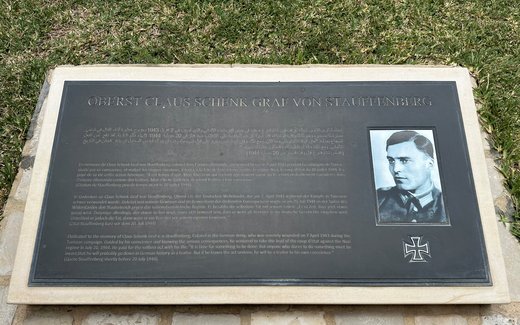The German war cemetery Bordj Cedria is located around 25 kilometers
east of the capital Tunis. More than 8,500 German soldiers who died during the Second
World War II in the course of the Tunisian campaign in combat operations or as prisoners
Lost their lives in combat or as prisoners of war are buried there.
Description of the cemetery
The war cemetery is located on the foothills of the Keddel mountains, on an
advanced shoulder of a slope. Adapted to the slope are six staggered
staggered individual courtyards, where the bones of the dead are buried in ossuaries
(ossuaries).
A stone in the central memorial courtyard bears the inscription in Arabic, German and
inscription in Arabic, German and French: "In this cemetery rest 8,562
german soldiers from 1939 to 1945". It also commemorates 104 soldiers whose graves in
Tunisia could not be found are also commemorated. A covered staircase leads to a
to a visitor room.
Occupancy
In September 1940, Italian troops began their attack on Egypt, which was under
egypt, which was under British rule. The offensive failed, so that Germany
germany, allied with Italy, began the - initially successful - "African campaign" in February 1941
initially successful - "African campaign".
Growing difficulties arose due to the increasingly long supply routes
Supply routes, which did not allow sufficient supplies for the German troops
troops. This and the clear numerical superiority of the British, supported by the USA
the British, supported by the USA, ultimately led to the capitulation of the
german-Italian units near Tunis on May 13, 1943.
The soldiers of the Wehrmacht were buried in six provisional collective cemeteries
in Nassen (Cap Bon), Bizerta, La Mornaghia (Mornag), El M'Dou, Mateur and Sfax
are buried. Many others rest in field graves scattered across the country.
The German-Tunisian War Graves Agreement came into force on March 28, 1966.
Following the establishment of the cemetery at Bordj Cedria from 1973 to 1975, the
Reburial of the war dead began at the site on the north-western slope of the
Keddel. During the reburial, a large proportion of the approximately 2,000 unknown
Dead were identified. The war cemetery was opened to the public on September 28, 1977
was opened to the public.
Special feature
One side of the visitor room is decorated with colorful glazed tiles.
They were fired in Nabeul, an old Tunisian pottery town. The tiles
show the outline of Tunisia and the original burial sites of the people reburied in
Bordj Cedria of the war dead.
The inscription is engraved: "This war cemetery was built between
1973 to 1975. The war dead originally buried in Bizerta, El M Dou, La
Mornaghia, Mateur, Nassen and Sfax found their final resting place"
final resting place".
